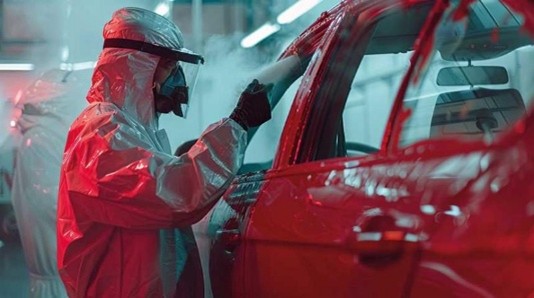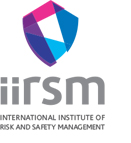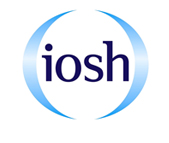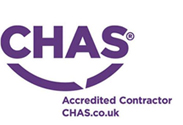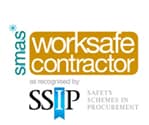The Health and Safety Executive (HSE) has been carrying out inspections across vehicle repair and body shop premises, with a particular focus on the management of respiratory health risks. This includes:
Exposure to paints, isocyanates, body fillers, sanding dust, metal particulates, and other airborne contaminants commonly generated during vehicle repair and refinishing work.
Why the HSE is focusing on respiratory health
Occupational asthma remains a significant health risk in the vehicle repair sector. Exposure to airborne substances such as isocyanates from spray painting and fine dusts from sanding and preparation works can cause irreversible breathing conditions. Once sensitised, individuals may be unable to continue in their trade.
This inspection initiative forms part of the wider requirement under the Control of Substances Hazardous to Health Regulations 2002 (COSHH), where employers must assess, control and monitor worker exposure to hazardous substances.
Key risk areas under inspection
Spray Booths and Small/Medium Area Repair Technique (SMART) Repair Spray Facilities.
- Correct use and maintenance of spray booths and Local Exhaust Ventilation (LEV) systems.
- Evidence of LEV testing within the last 14 months, as required under COSHH.
- Ensuring staff are face-fit tested for tight-fitting Respiratory Protective Equipment (RPE).
- Verification that isocyanate-containing paints are handled with appropriate controls.
Sanding, Grinding, and Body Preparation Activities
- Use of on-tool extraction, vacuum-assisted sanding equipment, and downdraft benches.
- Control of fine particulate dust in enclosed spaces.
- Housekeeping standards to prevent dust build-up.
Use of RPE
- Suitable RPE selection based on exposure risk and compatibility.
- Face-fit testing and repeat testing when required (e.g., weight/face shape change).
- Demonstrating RPE maintenance records and wearer training.
Health Surveillance
- Lung function testing for staff exposed to isocyanates, in line with HSE guidance (HSG53).
- Clear referral process for workers reporting breathing difficulties or sensitisation symptoms.
Practical steps to ensure compliance
Employers should review:
- COSHH Assessments: Up to date, task specific and communicated to staff.
- Ventilation Systems: LEV tested and working effectively, with clear records.
- RPE Management: Fit testing up to date, training delivered, equipment maintained.
- Safe Working Behaviours: Check staff are using controls, not bypassing them.
- Health Surveillance: Regular lung function checked, recorded and reviewed.
Benefits beyond compliance
Improving respiratory risk management:
- Reduces sickness absence.
- Protects skilled workers and retains talent.
- Lowers long-term costs linked to health claims.
- Strengthens business reputation with clients, insurers, and regulators.
How we can support
We can assist your business by providing:
- COSHH assessments and updates.
- LEV inspection compliance, including selecting a suitable inspection and testing partner.
- RPE selection guidance and face-fit testing.
- Arranging employee training and awareness sessions.
- Health surveillance programme setup, including selecting the correct occupational specialists.




